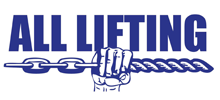
A HEIGHT SAFETY GUIDE
Working from heights unquestionably increases the risk of falls, and potential injury or death. This doesn’t necessarily mean that you need to be working all that high, as accidents can happen even from just working on a ladder.
Safe Work Australia reported 359 workers were killed from a fall, during the period of 2003 - 2015. Most of these fatal accidents are associated with falls from roofs and ladders, with the majority being over 45 years of age, and most working in the construction industry.
Have a Safety Plan!
Don’t forget to make sure you have emergency procedures in place in case of any ![]() injuries or falls that may occur when working at heights. It’s very important that you always keep a first aid kit nearby, just in case. There should also be a rescue plan in place, which is a clear strategy to rescue a casualty in the case of a fall or medical episode. It is important to not just rely on emergency services but to have your own plan, equipment and trained personnel nearby, while any work is carried out.
injuries or falls that may occur when working at heights. It’s very important that you always keep a first aid kit nearby, just in case. There should also be a rescue plan in place, which is a clear strategy to rescue a casualty in the case of a fall or medical episode. It is important to not just rely on emergency services but to have your own plan, equipment and trained personnel nearby, while any work is carried out.
Factors of Falls & Incidents
Many different factors can cause injury and death including the distance of a fall, the gradient of the work area, uneven surfaces, electrical sources, lighting conditions, voids, deteriorating materials, unprotected edges, slippery surfaces, unsuitable access equipment, poorly trained or untrained operators and adverse weather conditions.
Risks of Falling Objects
On the other hand, falling objects from heights can also cause severe injuries that may result in death, brain damage, paralysis or multiple fractures. You can read our article “STOP THE DROP” to find out more. Small items are more dangerous than you may initially think.
Different Types of Height Safety Access Systems
There are two main types of systems that can assist you when you’re looking for height safety equipment set ups.
Fall Restraint System
Fall restraint systems are designed to secure and restrict your movement, which helps to significantly reduce the possibility of a fall. It should be set up that if you had to work on a roof as an example, it would not allow you to get close to any edges. These systems still allow plenty of mobility to perform the task and sometimes more than a fall arrest system, which might only have a single anchor to work off. See pictured example of a fall restraint system below.
Fall Arrest System
A fall arrest system will save a person in the case of a fall and reduce falling forces on the body to reduce possible injuries. This system allows more flexibility; the person will be securely attached to a number of pieces of different equipment and in the case of a fall the arrest system will hold the person saving them from major injury or even death.
Fall Restraint or Fall Arrest?
Each system has its benefits and downsides and to decide which system would work best for you. First, you need to assess the risks of the work to be performed and work out what is required.
No matter how big or small your job, at All Lifting we know all about height safety We have a wide range of solutions for anyone working at heights, rope access and confined space applications. We want to help you to protect yourself and others when working with fall risks.
If you are looking at purchasing height safety equipment and you are not sure about the equipment you need, or you are wanting to improve your current set up, contact one of our height safety specialists today.

